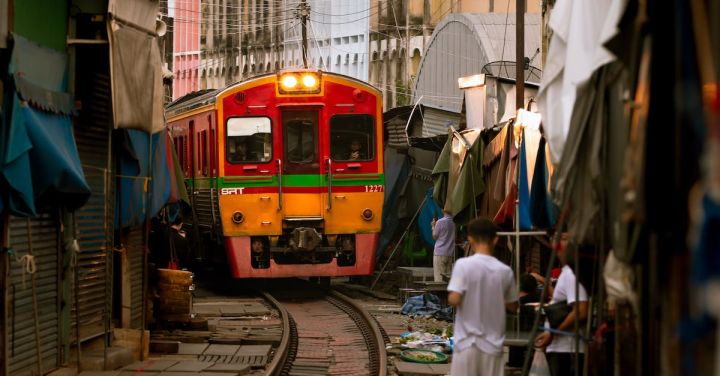Trains have long captivated the hearts and minds of people around the world. These formidable machines, with their rhythmic chugging and whistling, have become symbols of adventure, romance, and excitement. It is no wonder, then, that trains have found their way into the realm of storytelling, where they continue to weave their magic and transport readers to new and captivating worlds.
In literature, trains have played a significant role in shaping the narrative and evoking a sense of anticipation. From Agatha Christie’s “Murder on the Orient Express” to J.K. Rowling’s “Harry Potter” series, trains have proven to be more than mere modes of transportation. They serve as catalysts for intrigue, bringing together a diverse cast of characters and setting the stage for thrilling adventures.
In Christie’s iconic mystery novel, the Orient Express becomes a microcosm of society, as a murder takes place on board and the passengers become suspects. The confined space of the train intensifies the tension and suspicion, creating a gripping atmosphere that keeps readers on the edge of their seats. The train, with its luxurious compartments and elegant dining car, becomes a character in its own right, a witness to the events unfolding within its walls.
Similarly, in Rowling’s magical world, the Hogwarts Express transports young witches and wizards to the renowned Hogwarts School of Witchcraft and Wizardry. The train, with its hidden platform and steam billowing from its chimney, adds an element of enchantment and wonder to the story. It becomes a gateway to a world of spells and potions, where anything is possible.
Beyond literature, trains have also found a place in the world of cinema. In Alfred Hitchcock’s “North by Northwest,” a thrilling chase scene takes place on a train, as the protagonist, played by Cary Grant, is pursued by mysterious agents. The train’s relentless momentum and the claustrophobic setting add to the suspense, making it one of the most memorable scenes in cinematic history.
In more recent times, trains have continued to inspire storytellers. In the critically acclaimed film “Snowpiercer,” a post-apocalyptic society survives on a perpetually moving train. The train becomes a metaphor for class struggle, with the wealthy residing in the front cars and the impoverished confined to the rear. The film explores themes of inequality and rebellion, using the train as a powerful symbol of oppression and hope.
Trains have even made their way into children’s literature. In Chris Van Allsburg’s “The Polar Express,” a young boy embarks on a magical journey to the North Pole aboard a mysterious train. The train, with its golden ticket and steam-powered engine, represents the power of belief and the wonder of Christmas. It serves as a reminder that, no matter how old we are, there is still magic to be found in the world.
Trains in storytelling are more than just modes of transportation. They are vehicles of imagination. They take us on exhilarating journeys, both literal and metaphorical. Whether it is solving a murder mystery or exploring a fantastical world, trains have the power to transport us to places we never dreamed possible.
So, the next time you embark on a literary adventure, keep an eye out for the train. It may just be the ticket to an enthralling journey that will stay with you long after you turn the final page.
